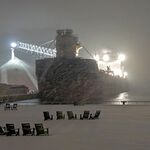christiesplits
Senior Member
I use West Jet and Air Transat usually exclusively, so I never really experienced Terminal 1 apart from the Arrivals area and the concourse near UPX. I flew Air Canada last week and was blown away by the T1 international departure lounges compared to T3 - truly night and day.




